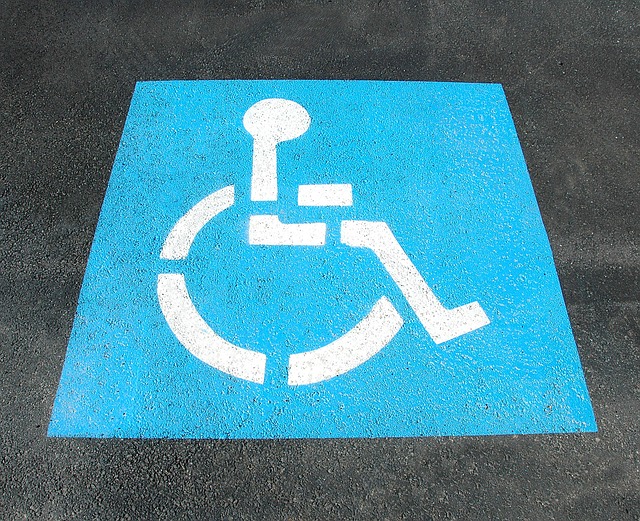This speed seminar is for anyone who needs to know what’s really behind a “zero percent” whole person impairment rating (WPI). To read our blog article on zero percent WPI, click here.
RateFast’s Roadmap to Apportionment
Apportionment is one of the top three decisions which can delay a WorkComp claim from closing. This is understandable, as it’s a tricky subject. Nearly all medical providers have a different idea about how apportionment should be arrived at. Insurance companies want to pay the injured worker the right price, the injured worker needs to be adequately compensated… And the employer only wants to be responsible for the part of the injury which was caused at work.
Bottom Line: There are no clear rules with apportionment. Although the law defines that only “permanent disability” is to be apportioned, there are no instructions on how the medical provider is to actually do it. Is it functional disability (eg. could lift 20 pounds before the injury and now lifts only 10 pounds)? Is it “permanent disability” from a permanent disability rating (PDR) that results from an impairment measurement (eg. %Whole person impairment, which may or may not result in true permanent functional disability). Or, is it a change in treatment burden such as medications, therapy, and or other measurable medical support that is now needed, new, or increased from a pre-injury condition to maintain the new level of function? Which one is a correct method? They can all be used clinically with equal defensibility when correctly explained and supported.
There are a few things which can be referenced when deciding apportionment, in order to keep consistent, objective impairment reports.
Let’s start with some definitions.
- Apportionment is one of the subsets of the PR-4 report.
- It’s a section where the medical provider is asked to make a determination if the permanent disability that results from the work injury may be attributed medically to any other conditions.
Now time for a real-world example.
A gentleman who is 25 y/o is lifting a box at work. He injures his back and receives treatment. At the conclusion of the report the doctor is going throught the case history and it turns out that the worker had a pre-existing injury to his back. This placed him on a restriction from listing more than 20 pounds. After this new injury he can only lift 10 pounds.
Is apportionment present and if so, what %?
The answer is yes. He is 50 % apportioned to his permanent disability from the old, unrelated event when he hurt his back.
In this case we’re lucky enough to have a clear a baseline of pre-existing disability, we know the worker is at MMI, and now there’s a new level of permanent disability. This makes the apportionment determination much simpler, and helps with the timely closure of the claim. Remember apportionment is no walk in the park, so if you’re looking for any advice feel free to Submit a PR-4 report for review today!
What is Occupational Telemedicine?
Our sister website www.pr4report.com recently created a downloadable FAQ about telemedicine in workers’ compensation—or “Occupational Telemedicine.”
If you’re in workers’ compensation and you’d like to learn more about how you can use telemedicine—online visits—to benefit your practice and patients, then just this might be worth reading.
A lot of RateFast members use telemedicine in conjunction with RateFast to great effect. Contact us for more information about how telemedicine can benefit your medical practice.
Understanding Disability: For Insurance Adjusters
Question: Dr. Alchemy, Based on limited range of motion for the neck in the PR-4 exam, can the injured worker return to usual and customary work duties? (This worker was provided an impairment rating WPI value, but no work limitations were clinically indicated). Sincerely, DS
Answer: Dear DS, Impairment and disability are two independent concepts. Impairment value is a loss of an organ system or function to which a number value is assigned, whereas, “disability” is an ability to meet social or occupational demands. An individual may have impairment but no disability, or the reverse may be true.
A great example here is a knee injury with a meniscus tear. If I choose to not have surgery, but have range of motion above the ratable guidelines, I have a non-ratable knee, BUT I may not be able to stand, squat or lift to the requirements of the job. So, no impairment, but disability (eg. work limitation).
Same knee example as above, but I have surgery this time and a partial meniscus debridement is performed. My knee is perfect post operatively and no pain. I return work no problems. My impairment, however, is 1% WPI based on DBE table rating in Chapter 17, Lower Extremity Table 17-33 etc.
Summary, when an impairment value is incorporated into the California Permanent Disability Rating (PDR) calculation, true “disability” may or may not be present.
What is MMI?
Your patient or injured worker has reached MMI. But what does MMI mean when we’re talking about California workers’ compensation?
MMI is shorthand for Maximum Medical Improvement, defined on pg. 2 of the AMA Guides to the Evaluation of Permanent Impairment 5th Edition as the following:
An impairment is considered permanent when it’s reached Maximal Medical Improvement, meaning it’s well stabilized and unlikely to change substantially in the next year, with or without medical treatment.
The date of MMI is important: it’s the date when a patient is ready for an impairment rating, and for decisions about future care and permanent work restrictions.
How Do You Know if a Patient is MMI?
How can you tell when a work injury has “stabilized” and is “unlikely to change substantially in the next year, with or without medical treatment”?
To find out what goes into determining MMI, keep a few key questions in mind:
1. Is there any on-going medical treatment that will change the injured worker’s functionality?
For instance, imagine a case where a patient has a back injury, and can only lift 25 pounds.
Physical therapy helped improve the patient’s condition in the past, and they still have six more physical therapy visits authorized by the insurance carrier.
In this scenario, the patient may be able to lift more weight after completing all their physical therapy visits.
Why declare a patient MMI if they are in the midst of ongoing treatment that may improve their condition?
2. Is the impairment rating going to change?
Another example: a worker with a shoulder injury is improving their range of motion with physical therapy, but they cannot improve their ability to lift more weight.
Until their range of motion remains the same, they will not be eligible for MMI.
As soon as the claim is filed, MMI becomes the ultimate goal for treatment. Patients obviously want to get bet better after a work injury, but sometimes they continue to have pain. MMI does not mean that the patient is no longer experiencing pain. It’s the doctor’s responsibility to communicate this to the patient, and to everyone involved in the case.
What is the technical definition of disability?
Whether you’re a doctor, an attorney, or an insurance adjuster, a precise definition of disability is essential in impairment rating. However, for such an important term its technical definition often goes unexamined.
What You Need to Know About Disability
- Disability is an inability to meet social, occupational, personal, or statutory requirements because of impairment.
- Disability is different than impairment.
- Someone may have disability at home but not at work. Likewise, an individual may have disability at work, but not at home.
- A physician may provide an opinion on disability if he/she has expertise and is acquainted with the individual’s work activities and activities of daily living.
- An impairment evaluation is only one aspect of determining disability. A disability evaluation includes information about skill, education, job history, adaptability, age, environment requirements and modifications.
Time for an Example
Consider this: a 43 year old man performs sedentary clerical work. He has a permanent impairment from an amputation of the right leg below the knee. He cannot climb stairs in his home. Is he disabled from occupational demands? No. He performs clerical work that doesn’t require him to walk around. Is he disabled from personal demands? Yes! His activities of daily living are affected. Feel free to email us if you have any questions about disability and impairment rating.
What are Activities of Daily Living in the AMA Guides 5th Edition?
An impairment report without an inventory of the patient’s Activities of Daily Living (or ADLs, as we like to say) is like trying to drive to an unknown destination without a map. After all, how can you determine the severity of an injured worker’s impairment without understanding how his or her daily life is (or isn’t) affected?
If you’re a provider writing an impairment report such as a PR-4 report, then asking your patient about his or her activities of daily living is essential. If you’re a claims adjuster or an attorney reviewing an impairment report, keep an eye out for whether or not the physician has made note of the ADLs.
What You Should Know About Activities of Daily Living
- In the the AMA Guides 5th Edition, the Activities of Daily Living (ADLs) are an inventory of 34 activity measurements that show how an injury affects the life of the individual (page 4).
- The activities of daily living include basic functions such as eating, speaking, personal hygiene, and moving around.
- The doctor’s description of ADLs serves as objective support when adjusting the final injury value (Whole Person Impairment WPI) up or down.
- Once determined, the ADL value may serve this function for multiple impairments being calculated. For example, a shoulder injury may not even consider ADL, while a skin injury requires the ADLs to place the condition in a primary category. Other conditions use ADLs somewhere in between, such as determining the influence of pain on a nerve function.
Attention Medical Providers!
If you are examining a worker who has injured multiple body parts, then a separate ADL inventory must be performed on each injured body part. For example, if the worker has injured both her knee and her shoulder, then you should check to see how both her shoulder injury and her knee injury affect each activity.
It’s a lot of work, but it’s necessary. Here’s why:
- A complete ADL inventory tells the person who reads the report (such as an insurance administrator) that you invested additional time and effort into understanding the employee’s level of disability.
- A complete survey of the activities of daily living is a set of data that further supports the conclusions and final calculations of the reports impairment rating.
For example…
If you, as a medical provider, assign a worker’s injury a very high impairment rating—such as 90% whole person impairment—then the claims adjuster for the claim needs to understand why. If you demonstrate that the injury has disrupted all of the worker’s activities of daily living, then the impairment rating is supported. But if you don’t mention the activities of daily living at all, then you might very well receive a phone call from the insurance company in short order.
Reports that lack mention of the complete ADL inventory should be carefully considered before the conclusions are accepted as valid.
If a reader of an impairment report is unable to understand how much an injury affects the individual’s daily life, understanding the reasons for arriving at the final whole person impairment (WPI) are nearly impossible.
Bottom line: If you create impairment reports, include a complete ADL inventory. If you’re a RateFast user, then you already know that our PR-4 report-writing system ensures that you ask about each activity for all body parts.
If you review impairment reports, insist that activities of daily living inventories are provided.





